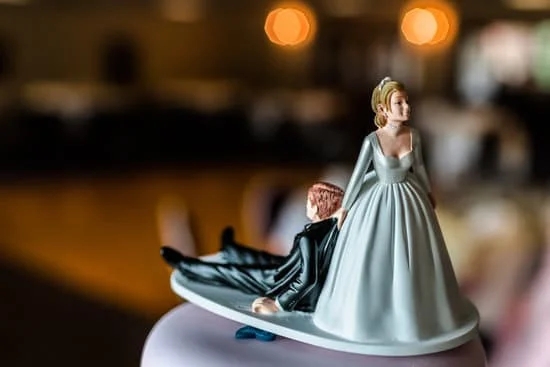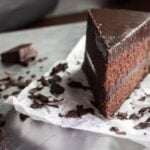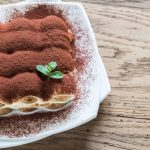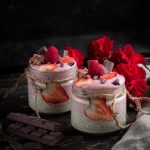Are you looking to elevate your cake decorating skills? Learn how to make hard icing for cake decorating with our comprehensive guide. Whether you’re a beginner or an experienced baker, mastering the art of hard icing can take your creations to the next level.
Hard icing is a versatile and essential component in the world of cake decorating, allowing for intricate designs and beautiful decorations that can truly make your cakes stand out. By following our step-by-step instructions, you’ll be able to create stunning cakes that are sure to impress your friends and family.
In this article, we will cover everything you need to know about making hard icing, from the essential ingredients required to helpful tips for achieving the perfect consistency. We will also explore different ways to color and pipe hard icing onto cakes, as well as creative ideas for using it in your decorating projects.
So get ready to unleash your creativity and transform your cakes into edible works of art with our guide on how to make hard icing for cake decorating.
Ingredients Needed for Hard Icing
When it comes to making hard icing for cake decorating, the key is to have the right ingredients on hand. The basic components of hard icing include confectioners’ sugar, meringue powder, and water. Confectioners’ sugar, also known as powdered sugar, provides the sweetness and structure to the icing. Meringue powder acts as a stabilizer and helps the icing set firm. Water is used to adjust the consistency of the icing to achieve the desired thickness for decorating.
In addition to these fundamental ingredients, you may also want to consider adding flavor extracts such as vanilla or almond to enhance the taste of your hard icing. Gel food coloring can be used to tint the icing in various hues for decorative purposes. It is essential to use gel food coloring instead of liquid food coloring to prevent altering the consistency of the icing.
To ensure success in making hard icing for cake decorating, make sure all your ingredients are at room temperature before starting. This will help them blend together smoothly and create a uniform texture in the final product. With these key ingredients and proper preparation, you’ll be ready to whip up a batch of hard icing that’s perfect for adorning your cakes with intricate designs and decorations.
| Ingredient | Purpose |
|---|---|
| Confectioners’ sugar | Provides sweetness and structure |
| Meringue powder | Acts as a stabilizer and helps the icing set firm |
| Water | Adjusts consistency; achieve desired thickness |
Step-by-Step Instructions on How to Make Hard Icing
Making hard icing for cake decorating may seem like a daunting task, but with the right ingredients and techniques, you can achieve professional-looking results that will impress your friends and family. To start, you will need the following ingredients: confectioners’ sugar, meringue powder or egg whites, vanilla extract, and water.
First, sift the confectioners’ sugar to remove any lumps and ensure a smooth consistency for your icing. In a separate bowl, combine the meringue powder or egg whites with the vanilla extract and water. Mix these wet ingredients until they are frothy and well combined. Gradually add the wet mixture to the confectioners’ sugar while mixing on low speed, until all ingredients are incorporated.
Continue mixing on medium speed until the icing becomes stiff and glossy. If it is too thick, you can add additional water, one teaspoon at a time, until you reach your desired consistency. On the other hand, if the icing is too thin, simply add more confectioners’ sugar until it thickens up. Once your hard icing is ready, cover it with plastic wrap to prevent it from drying out while you prepare your decorating tools and cake.
Tips for Achieving the Perfect Consistency of Hard Icing
When it comes to cake decorating, achieving the perfect consistency of hard icing is essential for creating stunning designs that will impress your guests. The key to successful cake decorating with hard icing lies in getting the right texture that allows for easy piping and shaping while still holding its form. Here are some tips on how to achieve the ideal consistency of hard icing for your next cake project.
Proper Mixing Technique
One of the most important factors in achieving the perfect consistency of hard icing is using the right mixing technique. When combining the ingredients for your hard icing, be sure to mix them thoroughly but avoid overmixing, as this can lead to a stiff and difficult-to-handle icing. Use a stand mixer or hand mixer on low speed to blend the ingredients until they are smooth and well incorporated.
Adjusting Consistency
If you find that your hard icing is too thick and not coming out smoothly when piped onto a cake, you can adjust the consistency by adding small amounts of water or corn syrup. Start by adding just a few drops at a time and mixing well before adding more liquid. This will help you achieve a smoother, more pipeable consistency without making the icing too runny.
Testing for Proper Consistency
To ensure that you have reached the perfect consistency of hard icing for cake decorating, do a simple test before starting to decorate your cake. Fill a piping bag with a small amount of icing and pipe a few lines or shapes onto a plate. If the lines hold their shape without spreading or drooping, you have achieved the ideal texture. If not, continue adjusting the consistency until you reach the desired result.
Different Ways to Color Hard Icing for Cake Decorating
Coloring hard icing for cake decorating is a fun and creative way to add personality and flair to your baked goods. There are several methods you can use to achieve vibrant and eye-catching colors. Here are some different ways to color hard icing for cake decorating:
- Gel Food Coloring: One of the most popular options for coloring hard icing is gel food coloring. Gel-based colors are concentrated, which means you only need a small amount to achieve intense hues without altering the consistency of the icing.
- Powdered Food Coloring: Powdered food coloring is another great option for coloring hard icing. This type of coloring is especially useful when you want to achieve pastel shades or avoid adding extra liquid to your icing.
- Natural Food Coloring: If you prefer using natural ingredients, consider using natural food coloring options such as beet juice, turmeric, matcha powder, or blue spirulina. These options can provide unique colors and are perfect for those looking for a more organic approach to coloring their icing.
It’s essential to start with small amounts of color and gradually add more until you reach the desired shade. Remember that the color will intensify as the icing sits, so it’s always best to let it sit for a few minutes before adjusting the color further.
- To prevent streaks in your colored icing, mix the color in slowly and thoroughly until it reaches a consistent hue throughout.
- If you need multiple colors for your cake decorating project, divide your white hard icing into smaller portions before adding color. This allows you to work on several colors simultaneously without worrying about one part of the batch drying out while working on another.
- Always keep in mind that it’s easier to add more color than it is to lighten an over-saturated hue. Be patient and mix well between each addition of color until you achieve the precise shade needed for your design.
With these various techniques at your disposal, you can create beautifully colored hard icing that will take your cake decorating skills to the next level. Experiment with different colors and combinations to bring your creative visions to life on your cakes and other baked goods.
Techniques for Piping Hard Icing Onto Cakes
Piping hard icing onto cakes is a skill that can take your cake decorating to the next level. Whether you’re creating intricate designs or simply adding borders and details, mastering piping techniques is essential for achieving professional-looking results. In this section, we will explore some key techniques for piping hard icing onto cakes that will help you create beautiful and eye-catching designs.
Choosing the Right Tip
One of the first steps in piping hard icing onto cakes is selecting the right tip for the job. Different tips produce different effects, so it’s important to choose one that suits your design. For fine lines and writing, a small round tip is ideal, while a large star tip can create beautiful rosettes and borders. Experimenting with different tips will help you discover which ones work best for your desired look.
Practicing Consistent Pressure
Consistency in pressure is key when piping hard icing onto cakes. Too much pressure can result in uneven lines or blobs of icing, while too little pressure can lead to thin and weak lines. Practice applying even pressure on a test surface before moving on to your cake to ensure a smooth and consistent flow of icing.
Creating Smooth and Even Lines
To achieve clean and precise lines when piping hard icing onto cakes, it’s important to keep a steady hand and move at a consistent pace. Slow down when detailing intricate designs and speed up for smoother lines. Using guidelines or templates can also help maintain even spacing and symmetry in your decorations.
By mastering these piping techniques, you’ll be able to transform your cakes into works of art with beautifully piped designs and patterns using hard icing. Practice makes perfect, so don’t be afraid to experiment and refine your skills to achieve stunning results in cake decorating.
Creative Ideas for Using Hard Icing in Cake Decorating
When it comes to using hard icing in cake decorating, the possibilities are endless. One creative idea is to use hard icing to create intricate and delicate designs on your cakes. By using piping bags with different tips, you can pipe flowers, leaves, or even geometric patterns onto your cakes for a visually stunning finish.
Another creative way to use hard icing is to make 3D decorations for your cakes. You can create edible sculptures like animals, buildings, or even people using hard icing as your medium.
If you’re looking to add some sparkle and shine to your cakes, consider using hard icing to create metallic accents. By adding edible luster dust or edible gold/silver paint to your hard icing, you can achieve a beautiful metallic finish that will elevate the look of your cake.
Additionally, you can use hard icing as a base for other decorative elements on your cakes. For example, you can attach fondant cutouts, edible pearls, or sugar flowers onto the hardened icing surface for a multidimensional and textured look.
For those who love experimenting with different textures in cake decorating, try using hard icing to create marbled effects on your cakes. By mixing different colors of hard icing together in a swirling motion before piping it onto your cake, you can achieve a mesmerizing marbled effect that will impress any guest.
The key is to work quickly before the icing sets so that the colors blend seamlessly without becoming muddy. Overall, by thinking outside the box and exploring different techniques, you can unleash your creativity and discover unique ways to use hard icing in cake decorating.
| Creative Cake Decorating Ideas | Description |
|---|---|
| 3D Sculptures | Create edible sculptures like animals or people using hard icing. |
| Metallic Accents | Add luster dust or gold/silver paint to create shiny metallic finishes. |
| Marbled Effects | Blend different colors of hard icing for a mesmerizing marbled effect on cakes. |
Troubleshooting Common Issues When Working With Hard Icing
Working with hard icing can be a fun and creative way to decorate cakes, but sometimes things don’t go as planned. Here are some common issues that may arise when working with hard icing and how to troubleshoot them:
One common issue when working with hard icing is it being too thick or too runny. If your icing is too thick, try adding small amounts of water or corn syrup until you reach the desired consistency. On the other hand, if your icing is too runny, you can add more powdered sugar to thicken it up.
Another issue that may occur is air bubbles forming in your hard icing while piping. To prevent this, make sure to properly mix your icing before piping and tap the piping bag gently on the counter to release any air bubbles. You can also try using a toothpick to pop any air bubbles that may appear on the surface of the icing.
Sometimes your hard icing may not dry properly or take too long to set. To speed up the drying process, you can place your decorated cake in front of a fan or in a cool, dry place with good airflow. Avoid placing it in direct sunlight or a warm/humid environment, as this can affect the drying time of the icing.
By troubleshooting these common issues and following the tips provided, you’ll be able to successfully work with hard icing for cake decorating and create beautiful designs on your cakes. Remember that practice makes perfect, so keep experimenting with different techniques and have fun decorating.
Conclusion and Final Thoughts on Using Hard Icing for Cake Decorating
In conclusion, mastering the art of making hard icing for cake decorating can truly elevate your sweet creations to the next level. By utilizing the right ingredients and following the step-by-step instructions provided, you can achieve a beautifully firm and smooth icing that is perfect for intricate designs and decorations.
One key aspect to keep in mind is achieving the ideal consistency of your hard icing. This may require some practice and adjustments, but with patience and attention to detail, you can ensure that your icing is just the right texture for piping onto cakes and creating stunning decorations.
Whether you choose to color your hard icing using traditional food coloring gels or opt for natural alternatives like fruit juices or vegetable powders, there are endless possibilities for adding vibrant hues to your creations. Experimenting with different colors and piping techniques can help you unleash your creativity and take your cake decorating skills to new heights.
Frequently Asked Questions
How Do You Make Cake Icing Harder?
One way to make cake icing harder is by adding more powdered sugar to the mixture. By increasing the amount of powdered sugar, you can thicken the consistency of the icing, making it easier to work with and giving it a firmer texture.
What Can I Add to Icing to Make It Harden?
If you want to make your icing harden, you can add ingredients like meringue powder or cornstarch to the mixture. These ingredients help absorb moisture from the icing, allowing it to set and dry more quickly. Another option is to use royal icing, which naturally hardens as it dries.
Which Type of Cake Icing Dries Into a Hard?
Royal icing is the type of cake icing that dries into a hard finish. Made from confectioners’ sugar and egg whites or meringue powder, royal icing sets firm when exposed to air. It is commonly used for decorating cookies, gingerbread houses, and intricate designs on cakes due to its ability to dry with a smooth and hard finish.

Welcome to our cake decorating blog! My name is Destiny Flores, and I am the proud owner of a cake decorating business named Cake Karma. Our mission is to provide delicious, beautiful cakes for all occasions. We specialize in creating custom cakes that are tailored specifically to each customer’s individual needs and tastes.





